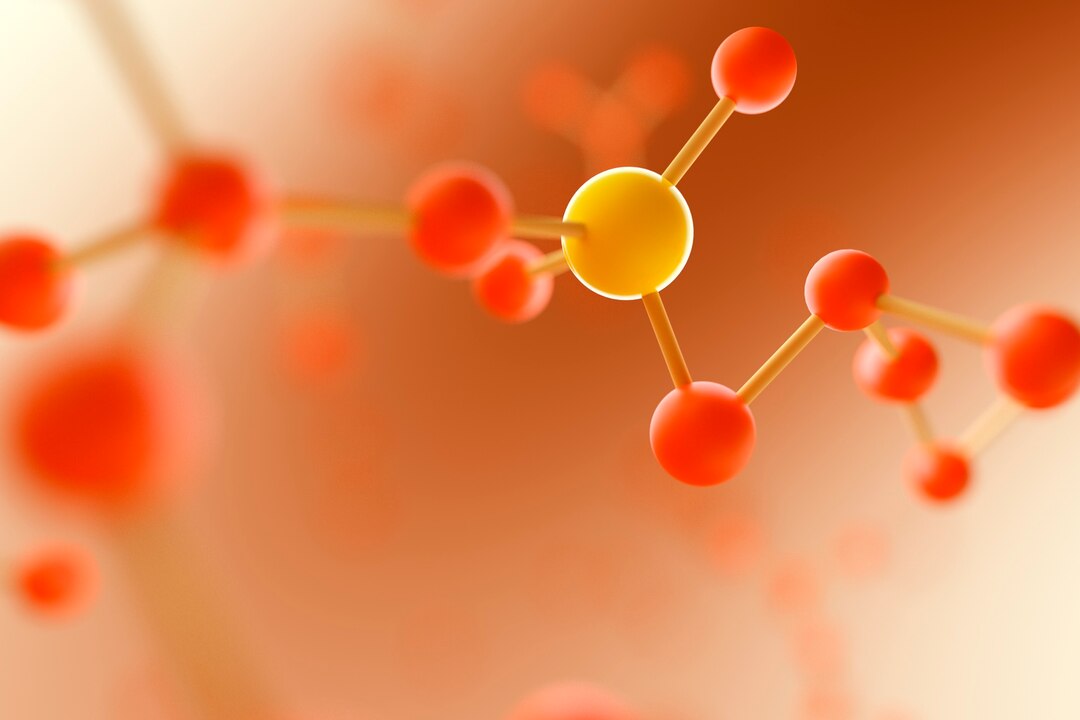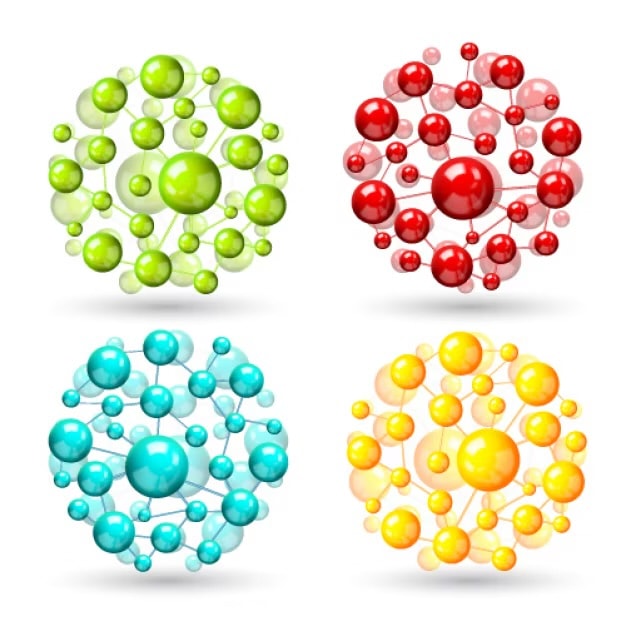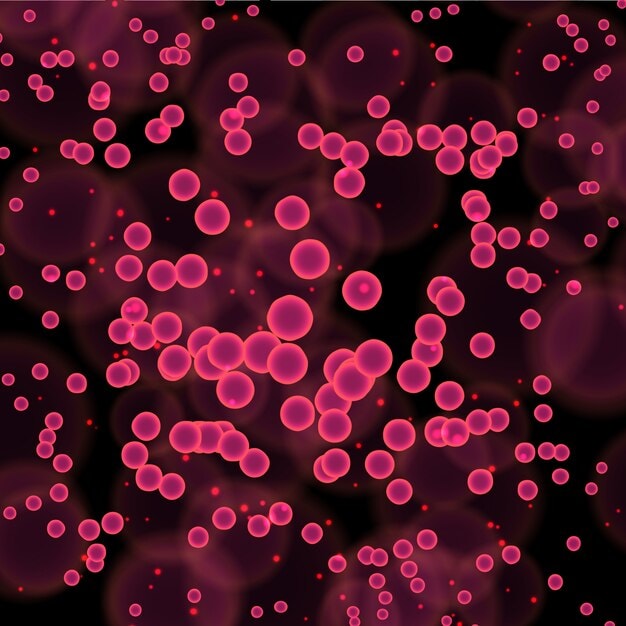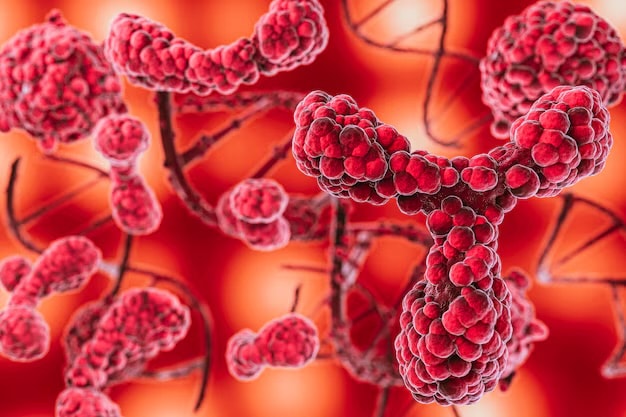
Understanding Myoglobin: Functions and Importance in Muscle Cells
Time to read 10 min
Time to read 10 min
Table of contents
Myoglobin is an essential protein in muscle tissues that plays a central role in oxygen storage and supply.
It is especially abundant in cardiac and skeletal muscles, supporting energy production and maintaining muscle activity.
Since its discovery, myoglobin has been the subject of extensive research, mainly because of its importance in muscle physiology, endurance, and injury response.
This article gives an in-depth study of myoglobin's structure, functions, and importance in muscle cells, and also its clinical applications and relevance in medical diagnostics..
• Molecular Structure: Myoglobin is a monomeric protein, consisting of a single polypeptide chain with a heme group attached.
• Oxygen Binding Affinity: It has a higher affinity for oxygen than hemoglobin, allowing it to extract and retain oxygen efficiently from the blood.
• Location: Myoglobin is mainly located in red (slow-twitch) muscle fibers, which are meant for endurance and aerobic activity.
1.Oxygen Storage and Supply
It is an intracellular oxygen reservoir. Therefore, myoglobin supplies a steady oxygen supply to muscles in motion. If oxygen levels become low, myoglobin delivers oxygen to keep cellular respiration and energy production active.
2. Oxygen diffusion
Myoglobin enhances oxygen diffusion into muscle cells by moving oxygen away from the cell membrane into mitochondria, where it is consumed in aerobic metabolism for generating energy in the form of ATP (adenosine triphosphate).
3. Buffer Against Oxygen Deficiency
Myoglobin prevents muscle fatigue at hypoxic conditions like those experienced at high altitudes or during anaerobic exercises by providing oxygen for maintenance of muscle contractions. Its function is important in maintaining the performance and endurance in sports.
4. Scavenging ROS
Myoglobin protects muscle cells against oxidative damage by scavenging ROS that may be formed when the body is stressed or during exercise or injury.
5. Marker of Muscle Injury
Myoglobin released in the blood stream when the muscles get injured or traumatized and is a biomarker of muscle injury and associated disorders like rhabdomyolysis and myocardial infarction, or heart attacks.
1.Role in Endurance and Athletic Performance
Myoglobin is involved in aerobic endurance through sustained oxygen delivery to working muscles. Athletes, particularly those who engage in long-distance running or cycling, require more myoglobin to strengthen their muscles' ability under stress for extended periods.
2. Adaptation to Oxygen Demand
Muscles rich in myoglobin, such as cardiac muscles and slow-twitch muscle fibers, are well-suited for sustained activities that require continuous oxygen supply. In contrast, fast-twitch fibers, which rely more on anaerobic metabolism, have lower myoglobin content.
3. Muscle Recovery and Repair
Myoglobin not only facilitates oxygen delivery but also aids in muscle recovery after intense exercise by restoring oxygen levels and reducing oxidative stress.
4. Diving Mammals and Myoglobin Concentration
Marine mammals, including whales and seals, have very high myoglobin levels in their muscles. This allows them to store oxygen and make long dives without needing to breathe, thus indicating the protein's importance in evolution.
1.Biomarker for Muscle Damage
Rhabdomyolysis
This is a condition in which muscle fibers break down, releasing myoglobin into the blood. High levels of myoglobin can cause kidney damage if not treated promptly.
• Heart Attacks: Elevated myoglobin levels in the blood can indicate cardiac muscle damage, making it a useful marker in acute myocardial infarction diagnosis.
2. Diagnostic Test for Myoglobin
A serum myoglobin test measures the amount of myoglobin in the blood. It is often used in emergencies to:
• Detect heart attacks in combination with other markers like troponin.
• Assess muscle trauma or disorders such as muscular dystrophy.
3. Myoglobinuria
In cases of severe muscle injury, myoglobin can be excreted in the urine, leading to a condition called myoglobinuria. This causes dark, cola-colored urine and may result in acute kidney failure if untreated.
Feature Myoglobin Hemoglobin
Structure. Single polypeptide chain (monomer) Four polypeptide chains (tetramer)
Function Oxygen storage in muscle cells Oxygen transport from Lung's to tissues
Oxygen Affinity Higher affinity for oxygen Lower affinity, designed for oxygen release
Location Muscle tissues Blood (red blood cells)
Release Timing Releases oxygen Releases oxygen as During muscle activity blood circulates
1.Rhabdomyolysis
• Muscle damage results in the release of myoglobin, which can overwhelm the kidneys, leading to acute kidney injury.
• Common causes include trauma, heatstroke, infections, and drug abuse.
2.Myocardial Infarction (Heart Attack)
• Damaged cardiac muscles release myoglobin, which is an early indicator of heart damage. However, troponins are preferred nowadays due to higher specificity.
3.Inherited Myoglobin Disorders
• Myoglobinopathies constitute rare genetic disorders that make alterations to myoglobin. Therefore, a decreased oxygen carrying capacity and the associated weakness in muscles manifest.
4. Myoglobin Deficiency
• Disorders that create the inability of sufficient myoglobin production manifest into muscle weaknes.
• Myoglobin is a protein located primarily in the striated muscles of vertebrates.
• It is encoded by the MB gene in humans and consists of a single polypeptide chain with one oxygen binding site
• Myoglobin contains a heme prosthetic group that can reversibly bind to oxygen.
• Myoglobin is a single polypeptide chain of 154 amino acids.
• The chain consists of eight α-helices assigned the letters A–H.
• The molecule contains a heme prosthetic group, which includes a porphyrin ring iron ion.
• Myoglobin is a globular protein found in muscle cells.
• It is responsible for the storage of oxygen in muscle cells.
• Myoglobin contains a Fe(II) cation bound to a heme group, which gives it the ability to bind to oxygen reversibly.
• Oxygen can bind to the heme residue of myoglobin due to the iron ion’s interaction with six ligands.
• Myoglobin can also bind alternate ligands such as CO, nitrite, and azide molecules.
• Myoglobin has a higher affinity for oxygen compared to hemoglobin and does not have cooperative binding with oxygen.
• The primary function of myoglobin is to supply oxygen to the muscle.
• It does this by releasing its oxygen supply to the mitochondria that make up the respiratory chain.
• Myoglobin serves as a buffer of intracellular oxygen concentrations and as an oxygen reservoir in muscle.
• Myoglobin is found in the highest concentration in the striated muscles of vertebrates.
• It is present in the cytoplasm of cardiac myocytes and the sarcoplasm of oxidative skeletal muscle fibers.
• Myoglobin’s main clinical significance comes with its association with muscle damage.
• In particular, it correlates with rhabdomyolysis and myocardial infarction.
• Myoglobin is detectable in the urine as the result of hereditary myopathies.
• Myoglobin testing can occur in the blood or urine.
• The main indications for checking this lab are for rhabdomyolysis or myocardial infarction.
• Myoglobin knockout models have been created to try to understand its functions more clearly.
• Mice models have mutated myoglobin to the point of it being undetectable in cardiac and skeletal muscle.
• The mutation causes several lethal cardiovascular defects in embryos.
• Myoglobin is a member of the globin superfamily, which also includes hemoglobin.
• It has a higher affinity for oxygen than hemoglobin and is very efficient at extracting oxygen from the blood.
• Myoglobin is mainly present in the striated muscle of vertebrates, whereas hemoglobin is found in the bloodstream as part of erythrocytes.
• Myoglobin is an essential protein for muscle cells, responsible for storing and supplying oxygen.
• Its unique structure and function allow it to play a crucial role in muscle physiology.
• Understanding myoglobin’s role, structure, and function is important for understanding muscle biology and disease.
Myoglobin is a heme-containing protein mainly present in skeletal and cardiac muscles. Its major function is to store and deliver oxygen within muscle cells. Myoglobin has one polypeptide chain, bound to a heme group, which makes it efficient in binding oxygen molecules.
The main role of myoglobin is to hold oxygen and deliver it to the mitochondria during exercise or stress, when more oxygen is needed. It provides the mitochondria with a continuous supply of oxygen, which they can use to make ATP by aerobic respiration.
Moreover, myoglobin enhances oxygen diffusion inside the muscle cells, protects from hypoxia, and plays a buffering role in regulating cellular oxygen levels during intense activities. Its rapid release of oxygen renders it crucial for endurance muscles and recovery after intense efforts.
While both myoglobin and hemoglobin are heme-based proteins that bind oxygen, they play different roles within the body.
Key Differences Between Myoglobin and Hemoglobin:
Feature Myoglobin Hemoglobin
Structure: Single polypeptide chain (monomer) Four polypeptide chains (tetramer)
Function Stores: supplies oxygen within muscle cells Transports oxygen From lungs to tissues
Location: Found in muscle tissues Found in red blood cells (RBCs)
Oxygen Affinity: Higher affinity for oxygen Lower affinity, facilitates oxygen release
Release Mechanism: Releases oxygen under low Releases oxygen oxygen levels Releases during circulation
Role in Energy: Helps support aerobic Brings oxygen for Metabolism in muscles cellular respiration
However, unlike the former, myoglobin stores oxygen in muscle cells which can be utilized whenever exercise is increased or when there is undue physiological pressure.
This protein is essential to endurance as well as athletic performance for it maintains oxygen stability inside muscles when high-level athletics are exercised.
1.Oxygen Storage: Myoglobin stores oxygen in muscles and releases it when oxygen demand increases, preventing muscle fatigue.
2.Enabling Oxygen Delivery: It is a bridge that allows for the transport of oxygen from the cell membrane to the mitochondria, where energy is produced.
3.Supports Aerobic Metabolism: Myoglobin supports aerobic energy production, which is efficient and longer-lasting than anaerobic processes.
Athletic Adaptations
• Endurance athletes: Runners, cyclists: tend to build up concentrations of myoglobin in the muscles more than other athletes.
• This adaptation promotes the means of maintaining a supply of oxygen and achieving higher work rates for longer time periods
• Training and aerobic fitness result in elevating myoglobin content by increasing muscle efficiency and providing resistance to fatigue.
However, anaerobic metabolism-dependent fast-twitch muscle fibers possess relatively lower myoglobin concentration, being preferred for short bursts of power than for endurance activities.
Myoglobin becomes part of the blood circulation once there is damage or injury in muscle cells. Its leakage into the bloodstream takes place through:
•Trauma or Crush Injuries: Muscular physical trauma that occurs due to broken limbs or accidents.
• Excessive Exercise: Severe exercise may cause muscle breakdown (rhabdomyolysis).
• Heart Attacks (Myocardial Infarction): Damage to cardiac muscles also releases myoglobin.
• Burns or Electric Shock: Extreme tissue damage.
Clinical Significance:
1.Muscle Damage Biomarker: High levels of myoglobin in the blood are a sign of muscle damage and can help in early diagnosis.
2. Rhabdomyolysis: High myoglobin levels can cause renal failure due to overwork if not treated promptly.
3. Myoglobinuria: The urine acquires a dark or cola-colored color due to the excretion of myoglobin and may indicate major muscle damage.
Myoglobin levels are often measured during emergencies by doctors to check the extent of muscle damage and to formulate treatment plans accordingly.
The myoglobin level can be measured by either blood or urine test, according to the clinical requirement.
Blood Test:
• Identifies increased myoglobin levels in the event of muscle injury or myocardial infarction.
• Gives results within minutes and is used in combination with other cardiac markers, such as troponin, to diagnose heart conditions.
Urine Test:
• Determines myoglobinuria, especially in patients with rhabdomyolysis.
• Indicates whether the release of myoglobin is causing stress to the kidneys.
Normal Values:
• Blood Serum: Typically less than 85 ng/mL.
• Urine: Should be undetectable in normal individuals.
• Elevated Blood Levels: This indicates muscle or cardiac damage and may warrant further testing to establish a cause.
• Urine Myoglobin Positive: This is an indication of severe muscle breakdown and could warrant urgent medical attention.
1.Myoglobin Deficiency:
In some rare cases, myoglobin deficiency has been linked with muscle weakness, fatigue, and decreased exercise tolerance. Genetic myoglobinopathies can make it challenging to maintain aerobic metabolism, leading to intolerance to exercise.
2. Myoglobin Overload:
The leakage of excess myoglobin, primarily due to rhabdomyolysis, creates a dangerous condition:
• Kidney Failure: High myoglobin levels can cause kidney tubules to be blocked with the result of acute renal failure.
• Electrolyte Imbalances: The released muscle proteins can cause potassium imbalances and heart arrhythmias.
• Toxic Effects: The degradation products of myoglobin can generate toxic byproducts, and further damage tissues.
Management of Myoglobin Overload:
• IV Fluids: To remove the toxins and prevent kidney injury.
• Electrolyte Management: Rectification of imbalances.
• Dialysis: In severe cases, to support kidney function.


